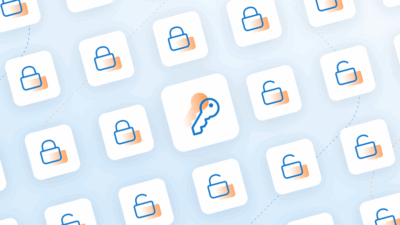Ecommerce businesses measure success and growth through several different metrics, with one greatly outweighing the rest. LTV, or a customer’s lifetime value, is the total amount of money a business will receive from a customer throughout their lifetime as a customer.
LTV measures long-term value and impacts every area of a business. As SaaS companies look to optimize different aspects of their business, increasing customer lifetime value should always play a part in their strategy. Here’s how to make that happen.
1. Take Advantage of a Product’s Natural Lifecycle
Certain products and services have a natural lifecycle, or period of use before they need to be replaced or renewed. If a software requires license renewals or is particularly useful during specific times of the year (think tax return software during tax season), an email campaign scheduled around that natural lifecycle can encourage customers to continue with their service. Additional emails could recommend complementary upgrades to long-time customers or cross-sell products that might be of interest to a customer who purchased the initial product.
2. Create Valuable Email Campaigns
Regular e-newsletters from your SaaS company can keep the brand at the forefront of your customer’s mind. Routine communication will not only keep the client engaged with a brand, but useful tips, industry news, and statistics related to your product or service will provide additional value to the customer.
To measure the success of this consistent communication, you should constantly test for areas of improvement. For example, open rates can be improved by regularly testing email subject lines. Another area to test is optimal sending frequency, which you can measure by altering the schedule month over month and analyzing when the engagement rates are highest.
3. Increase Overall Online Presence and Engagement
A monthly or weekly newsletter is a good baseline, though it’s important to look into expanding a company’s presence across the internet to interact with customers. SaaS companies can see an increase in LTV by being present in the inbox and establishing an active presence on social channels, external blogs, and news outlets in their industry.
Multichannel marketing puts a company in front of a customer and at the top of their minds, influencing their browsing and buying habits. Companies now have the ability to see where their customers spend their time online with the goal of engaging the customer at every point and action they take.
4. Offer a Recurring Payment or Subscription Option
In addition to per-use payment, many users enjoy having a recurring payment or subscription option available to them. The customers appreciate the convenience, but for SaaS companies, the big draw of recurring payments and subscriptions is the predictability of payment. When you know that you will have a predictable cash flow, it’s easier to make decisions when it comes to scaling your business.
Another advantage of subscriptions and recurring payments is the boost to your customer retention. People are reluctant to take the steps required to cancel a recurring payment. Unless your product is below their standards or they’re unhappy with the customer service they’ve received, you’ve hopefully got a customer for the long haul, which will help enhance your LTV.
5. Employ a Dunning Management System
If you haven’t set up a dunning management system for your SaaS, you should. A dunning management system is essentially a series of auto reminders and notifications for customers who need to renew. Credit cards expire or get canceled due to theft, so as soon as a payment fails to go through, the best way to get the customer back on track is to trigger the first in a series of emails and notices that the payment is past due.
In addition to reducing churn related to issues with the card on file, your dunning management system can perform the function of notifying the customer that the service is up for renewal. This notice will generate goodwill— your customer will appreciate the reminder, and you’ll get fewer calls requesting cancellation from angry customers who forgot they had your service on autopay. Automating these processes will save you time, increase your bottom line, and improve your customers’ LTV.
6. Find Opportunities to Upsell and Cross-Sell
It’s far easier to sell to existing customers than new prospects. In fact, the probability of making a sale jumps from 5-20% for new customers to a staggering 60-70% for those who are already using a company’s product or service.
Upselling, or encouraging buyers to opt for a pricier version of the item or service they’re getting ready to purchase, offers increase profitability and growth at a faster rate. However, it’s important to note that satisfied customers are more likely to upgrade to a more expensive, extended version of the service they’re already using. New customers are less likely to spend more than they were planning to when they first visited your site.
Cross-selling, on the other hand, is selling complementary products together. Popular ways to cross-sell include bundling products together for a discounted price, or offering the option to add suggested complementary products during the buying process.
7. Provide Stellar Customer Service
One Harvard Business School report found that a 5% increase in retention rates translates to 25-95% improvements in profit. How do you achieve a higher retention rate? Quality customer support. Real people responding to real problems in a prompt manner will always beat out canned responses that leave customers with the feeling of just being another ticket in a pile of help requests.
Churn is greatly influenced by the quality of customer support provided by a company–68% of customers who leave a company do so because of how they were treated, compared to a small 14% who leave based on dissatisfaction in the product or service. Excellent customer service = lower churn = increased LTV.
8. Collect Authentic Customer Feedback
Your SaaS company can ask customers for feedback in a variety of ways: reviews on your website, on social channels, in email surveys, and so on. Understanding how customers use the product or service, and how they feel it can be improved can help any company prioritize which areas of the business to focus on, and where they can scale down.
Improving your product in ways specifically requested by customers can directly impact the LTV. This data can also provide insight into how likely current customers are to recommend the business to their own network.
Need some assistance increasing your customers’ LTV? FastSpring can help. Download our guide, What You Need To Know About Selling Online today.
![[Customer Story] Why TestDome Considers FastSpring a Real Partner](https://fastspring.com/wp-content/themes/fastspring-bamboo/images/promotional/2023/FastSpring-TestDome-blog-thumbnail.jpg)








